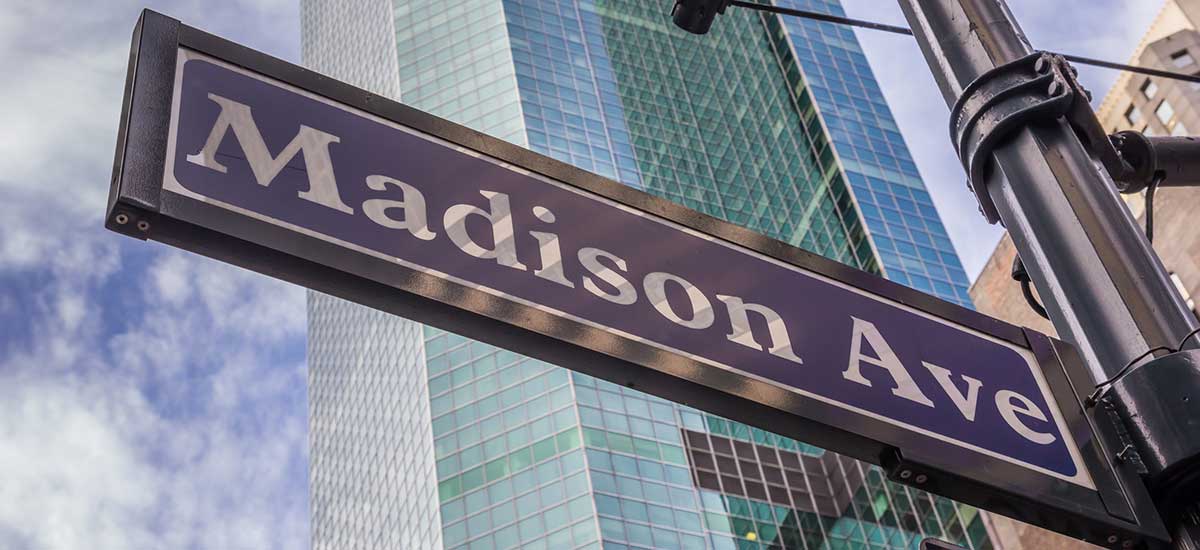By Albert J. Rizzi, M.Ed.
In my last blog, I shared thoughts about people with disabilities being portrayed in film by actors who represent that ability authentically. The catalyst for that was the nomination of Troy Kotsur for his performance in “CODA “, an actor who happens to be deaf playing a character who also happens to be deaf. Incidentally, both he and the film took home the Oscar. If you have not seen the movie yet, I highly recommend it. Included in my blog was a mention of representation of Ability in print ads and marketing. I commented, “Even Madison Avenue is increasingly onboard with authentic representation of Ability in advertising. We are now seeing amputees and models from the disability community represented, but that is a blog for another day.”
Well, to that end, today is another day to highlight how Madison Avenue is no longer ‘dis’ labeling people of Ability!
Madison Avenue is synonymous with the advertising industry. Since the 1920s, it earned its reputation as the epicenter of the business. If there was something that needed selling, the big players went to the “Mad Men” to get their products or services sold.
Don Draper, the genius advertising executive depicted on the television show Mad Men said, “Advertising is based on one thing, happiness…” Advertising delivers a message to the masses: any problem or concern that consumers have can be easily fixed thanks to what they are selling. Solve that problem and everyone is happy!
Either inadvertently or on purpose, depending on who you talk to, Madison Avenue also dictated the standard for beauty. The criticism was and still is that the message it infers, and most times blatantly says, “If you don’t look like this, there is something wrong with you, or you’re neither nor desirable nor sexy.” The standard of beauty was white, tall, blue-eyed, blonde, and painfully and unrealistically thin.
It was all over the news when the community of models with perfect smiles was joined by the still blonde, tall, and thin but gap-toothed Lauren Hutton in the 1970s. That seemed to be a nod, not to the exotic, but to the regular-looking people. Soon Madison Avenue figured out that people of all colors of the rainbow could sell things too. Thanks, United Colors of Benetton! I remember when top apparel manufacturer, Jones New York, eventually celebrated, women with curves, but coined them “plus-sized.” Shortly thereafter, plus-sized models were included on Madison Avenue as an important niche that was missing within the industry.
Currently, we are in an era in advertising where people are depicted and, dare I write this word, “celebrated.” We are no longer relegated to selling or promoting wheelchairs, hearing aids, and canes. Turn on the television or search online and you might notice people of Ability proudly promoting essential needs from clothing to cars and shampoo to hotels, spotlighting those of us who happen to be blind, have Down syndrome, or who roll through life in wheelchairs.
Is there a risk of objectifying Ability to inspire and then sell toothpaste to “temporarily able” consumers? Of course, but being included and seen for our authentic selves is worth that risk. But then I also worry about the same thing for “temporarily able” models. As the saying goes, sex sells. And PWD are sexy if I do say so myself.
The important thing to note is that people with disabilities are being seen AND heard from in ways like never before. Instead of being marginalized, disenfranchised, or hidden from society, we are being included and acknowledged as integral parts of everyday life. The one thing that most prophets of various religions declare, from Jesus to Muhammad to the Buddha, “All are welcome, all are valued, and above all else, all are loved.” Now our global society is becoming one that embraces those divine truths. That’s a good thing and I believe that the universe is conspiring in our favor and agrees that our world should chant out loud and proud, “Nothing about us without us.”
People of Ability are just as “normal” as our “temporarily able” peers when we imagine ourselves embodied in characters portrayed in film, television, literature, and now on Madison Avenue. For the disability community, it is important to be authentically represented in magazine ads, commercials, and billboards. It means that we “exist.” It means we are sexy and can sell America just about anything. The most important sell, however, is true inclusion. Madison Avenue is another rung in that ladder of ascension toward an inclusive world that celebrates diversity. In this case, it means that we exist and, unlike how people with disabilities have been depicted for thousands of years in nearly all books of worship, we are no longer allowing others to ‘dis’ label us as pitiful, outcasts, pariahs, or objects of scorn and ridicule. Imagine that. In the eyes of Madison Avenue, we simply can be the “Great I Am” made in our Creator’s image and represent what is truly divine, authentic, and who we were born to be.
At My Blind Spot, not only do we work to build a world where all digital platforms are accessible and usable by people of all abilities. We also strive to create a world of authentic inclusion, where everyone’s uniqueness is recognized and applauded in our society. I am always willing to partner with your organization if you share these goals. Please reach out to me at albert@myblindspot.org and let us discuss how we go about creating a United World of Color, Gender, Orientation, and now, Ability!
